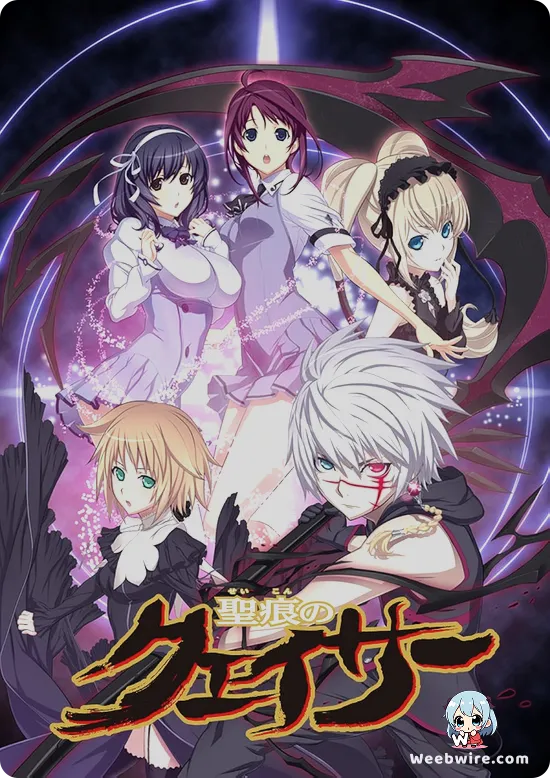

© TAKI Corporationwww.primevideo.com
Overview
The Qwaser of Stigmata is an action-supernatural series set primarily within the walls of St. Mikhailov Academy, a seemingly ordinary Japanese Eastern Orthodox institution that serves as a hidden battleground for supernatural conflict. The narrative centers on Mafuyu Oribe and Tomo Yamanobe, two seemingly average schoolgirls whose lives are irrevocably altered after they encounter and rescue Alexander Nikolaevich Hell, a silver-haired boy known by the moniker Sasha. Sasha is revealed to be an Iron Qwaser, an elite warrior with the ability to manipulate the element of iron, granting him immense power and regenerative capabilities. Qwasers are elemental manipulators who draw their extraordinary abilities from a unique and controversial source: the breast milk of female partners, a mechanism central to the series' mature and ecchi thematic elements. Sasha belongs to a faction dedicated to protecting the mystical High Circuit, an ancient relic sought after by opposing Qwaser groups. These factions are locked in a relentless shadow war, believing control over the High Circuit holds the key to determining the future fate of humanity. The series expertly blends intense, high-stakes combat sequences involving elemental control with the drama of school life and intricate character relationships. As Sasha, Mafuyu, and Tomo become deeply entangled in this supernatural conspiracy, they must confront powerful adversaries, explore the hidden history of the Qwasers, and grapple with themes of sacrifice, trust, and the true cost of extraordinary power. The anime is distinguished by its blend of dark fantasy action and pervasive ecchi fan service, establishing a highly specific and mature tone intended for adult audiences who appreciate both complex world-building and explicit content.
Opinion
The Qwaser of Stigmata presents a unique challenge for objective critique, primarily due to its polarizing integration of mature themes with serious supernatural action. Objectively, the animation quality, handled by TAKI Corporation, is competent and delivers dynamic action sequences that effectively showcase the elemental manipulation abilities of the Qwasers. While the visual style reflects the early 2010s aesthetic, it generally maintains consistency, particularly during high-energy battles. The story pacing is surprisingly effective, managing to weave a complex narrative surrounding the High Circuit and factional warfare without feeling overly rushed, though the frequent and explicit insertion of the power-up mechanic (ecchi scenes) often halts momentum, serving as both a narrative device and a dominant source of fan service. Character development is commendable; characters such as Alexander Nikolaevich Hell and Mafuyu Oribe evolve past initial stereotypes, showcasing genuine conflict and emotional connection crucial for grounding the high-stakes plot. The voice acting is professional and impactful; Kenji Nojima’s portrayal of Sasha effectively captures his aloofness and underlying tragic history. Thematically, the series explores loyalty, sacrifice, and the corrupting nature of power, using its controversial central mechanic not just for shock value but as an intrinsic part of the world’s lore. Overall, the series succeeds in its ambitious blend of dark fantasy and explicit content, offering a narrative depth that rewards viewers willing to look past its highly mature exterior, resulting in a series that is narratively sound despite its stylistic choices.
Characters
Mafuyu Oribe
Voice: Romi Park
Alexander Nikolaevich Hell
Voice: Kenji Nojima
Hana Katsuragi
Voice: Kana Ueda
Tomo Yamanobe
Voice: Sayaka Ohara
Credits
Studio
TAKI Corporation
Cover Art
TAKI Corporation Design Team
Publisher
Akita Shoten
Producers
TAKI Corporation, Sentai Filmworks
Episodes
Season 1
24 episodesInformation
Genres
Related Anime

Fullmetal Alchemist: Brotherhood

Attack on Titan

Hunter x Hunter Story, Characters, Revival News, & Similar Anime

Mob Psycho 100 III

SPY x FAMILY Cour 2
